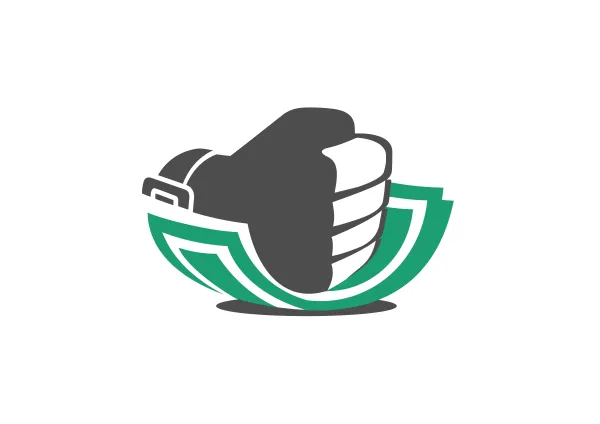Otolaryngology Coding Alert
Cut Down on Denials, Cross Reference Unspecified Codes

Know beforehand which codes will and won’t be paid.
Hindsight is always 20-20 when it comes to denials. Some denials are easily preventable if you had just taken the appropriate measures to avoid them beforehand. When it comes to diagnosis and procedural code compatibility, you should be aware of the steps you can take to reduce the likelihood that a procedure will be denied based on its assigned diagnosis code.
One of the most underutilized features found in any specialty coding book is the CPT®-ICD-10 crosswalk option. With it, you can find out which diagnosis codes will probably be paid when billed out with a particular procedure code. When it comes to otolaryngology coding, there are numerous procedure and diagnosis code combinations that you can assume match up together merely based on their anatomical relevancy to one another.
For example: Suppose you want to know if the diagnosis code J33.8 (Other polyp of sinus) will get paid with procedure code 31288 (Nasal/sinus endoscopy, surgical, with sphenoidotomy; with removal of tissue from the sphenoid sinus). Using the coding crosswalk feature, you will find that J33.8 does match up with 31288, which means that there should be no payment hold-ups based on an incompatible diagnosis code.
Caveat: The keyword here is “should.” While you can rely on coding crosswalks as a guide, it’s ultimately up to the payer’s discretion whether or not to pay for a code.
“Although a particular code’s crosswalk determination offers general guidelines, you never know if a private payer could deny a claim,” states Barbara J. Cobuzzi, MBA, CPC, CENTC, COC, CPC-P, CPC-I, CPCO, AAPC Fellow, Vice President at Stark Coding & Consulting LLC, in Shrewsbury, New Jersey. “It does, however, indicate that you could appeal and win based on medical necessity.”
The same idea applies for procedures that do not correspond to a particular diagnosis in the code’s crosswalk. Specific surgeries, for instance, still have a likelihood of being paid even if you cannot find the diagnosis code under the procedure code’s crosswalk.
The end goal here is to reduce any and all unnecessary denials due to incompatible diagnosis codes. The idea of utilizing the crosswalk feature might sound tedious at first, but it could end up paying dividends by helping to streamline the administrative process.
Check Before Billing Out with J34.-
There are certain unspecified codes that are more or lesslikely to cross reference with a particular CPT® code. For instance, most unspecified sinusitis codes will cross reference with their surgically affiliated CPT® codes. Even J01.90 (Acute sinusitis, unspecified) will cross reference with all nasal/sinus endoscopic procedures. A less specific code, however, such as J34.9 (Unspecified disorder of nose and nasal sinuses) is not found in the crosswalk of particular nasal/sinus endoscopic procedures.
For example: Code 31276 (Nasal/sinus endoscopy, surgical with frontal sinus exploration, with or without removal of tissue from frontal sinus) corresponds with J34.9 in the crosswalk, but not with 31288 (Nasal/sinus endoscopy, surgical, with sphenoidotomy; with removal of tissue from the sphenoid sinus). J34.89 (Other specified disorders of nose and nasal sinuses) also does not cross reference with 31288, but does with 31276 — despite the similarities between the two procedure codes.
Look Out for E/M Crosswalks
If you cross reference an E/M code in your coding crosswalk, you will find the same set of applicable diagnosis codes for each E/M code. The rules for cross referencing diagnosis codes with surgical procedural codes are not the same when it comes to E/M visits, however.
“E/M services are paid as long as there is a medically necessary reason for evaluation and management,” says Cobuzzi. “Most diagnoses (within reason) will support a standard E/M visit. However, it’s important to keep in mind that not all diagnoses will support a higher-level E/M code.”
That’s not to say, however, that some E/M visits do not deny based on a seemingly relevant diagnosis code. “Determining what diagnosis codes are and are not payable with E/M visits can take some trial and error,” explains Kimberly Quinlan, CPC, senior medical records coder for the University of Rochester Medical Center’s Department of Otolaryngology in Rochester, New York.
“Certain diagnosis codes, such as M26.6- (Temporomandibular joint disorders …), will not be accepted by most insurance companies for consultations. In these cases, we code the consultation based on other affiliated presenting problems, such as jaw pain,” Quinlan says. Payers will often associate the diagnosis of temporomandibular joint disorders (TMJ) with dental services rather than traditional otolaryngology medical services.
Remember: While matching CPT® codes with their corresponding ICD-10 in the crosswalk might reduce denials, never choose a diagnosis from the crosswalk simply because it will be paid. The documentation must support the diagnosis.
Related Articles
Otolaryngology Coding Alert
- Coding Compliance:
Myth Busting: When to Bypass NCCI
Sometimes there’s more to bundling than just CCI edits. Many coders see the National Correct [...] - ICD-10 Coding:
Cut Down on Denials, Cross Reference Unspecified Codes
Know beforehand which codes will and won’t be paid. Hindsight is always 20-20 when it [...] - CPT® Coding:
Follow These 2 Steps to Secure Reimbursement on Unlisted Codes
Rely on this expert advice to help take the stress out of billing unlisted. Last [...] - You Be the Coder:
Use Caution with Modifier 59 for Nasopharyngeal Excisions and Biopsies
Question: Using an adenoid curette instrument, a benign neoplasm is excised from the nasopharynx canal of [...] - Reader Question:
Don't Worry About Global Periods for Most FESS Procedures
Question: A patient had a functional endoscopic sinus surgery (FESS) six days ago. The patient returned [...] - Reader Question:
Remember When to Bundle 60500 into 60240
Question: My insurance company always bundles 60500 into 60240. If the physician performs a parathyroidectomy for [...] - Reader Question:
Consider Practicality, Chances of Success Before Appealing
Question: My provider follows by a philosophy that we should appeal all denials, regardless of whether [...]




